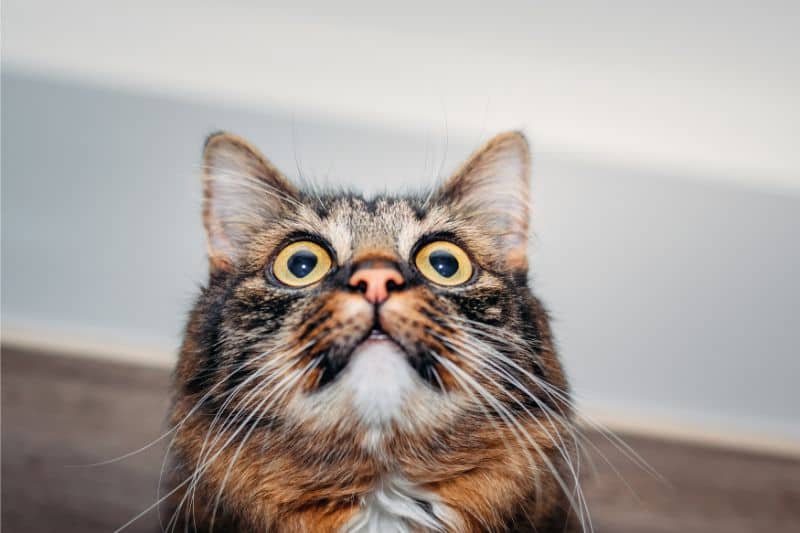Cat Language: What Kitty is Trying to Tell You

For pet owners, trying to decipher what their furry family member is communicating is a daily part of life with pets. Cats can be especially challenging, though, given their more reclusive nature.
Cat language is subtle, but that doesn’t mean they aren’t constantly trying to communicate with us. With a little bit of practice, you can pick up on what your cat is trying to tell you.
The Incredible Tail
The tail is one of the most expressive body parts on a cat, and knowing how to interpret its movements can tell you a great deal about what your cat is thinking and feeling at any given moment.
- Tail held high – An erect tail signals confidence, happiness, or contentment. Having a kitty greet you with tail held high means they are glad to see you! A high tail with a curve at the tip (sort of like a question mark) may indicate interest or playfulness.
- Tail down/out – A tail held loosely out behind the cat or closer to the ground can mean several things. The cat may be feeling bored or indifferent, or, if the tail is very low to the ground, may be experiencing insecurity, defensiveness, or submission.
- Bottlebrush – If the fur on your cat’s tail is puffed out, beware! Cats do this when they’re threatened, to make themselves appear bigger to a potential enemy.
- Beware the lash – A tail lashing back and forth is a pretty clear sign of impending attack. Hopefully the target is Snowball’s favorite catnip mouse and not your hand or pant leg!
- Vibrating – Does your cat’s tail seem to twitch or vibrate when they see you? This may be the ultimate sign that your pet is delighted by your presence.
- A fifth arm? – Another way cat’s express affection is by draping or winding their tails around those they love.
Chirps, Purrs, Meows, and More
Cats make so many cute, funny, and puzzling noises. What does it all mean?
- Meowing is an important part of cat language, at least where humans are concerned. Adult cats don’t typically meow to other cats, as cat-to-cat meowing is seemingly reserved for kittens and their mothers. Animal behaviorists theorize that meowing is a learned behavior, designed specifically to get attention from humans.
- Purring, that deep rumble coming from Kitty’s throat, is most often a sign of contentment in both domestic and wild cats. In some situations, purring can also be a comfort-seeking behavior during illness, pain, or when a cat is close to death.
- Growling and hissing are pretty obvious signals that a cat is angry or frightened. Stay away until Fluffy has calmed down, or remove the source of her fear.
Do you have more questions about cat language, or need to schedule an appointment for your cat? Don’t hesitate to contact your partners in pet care at Rocklin Ranch Veterinary Hospital.

